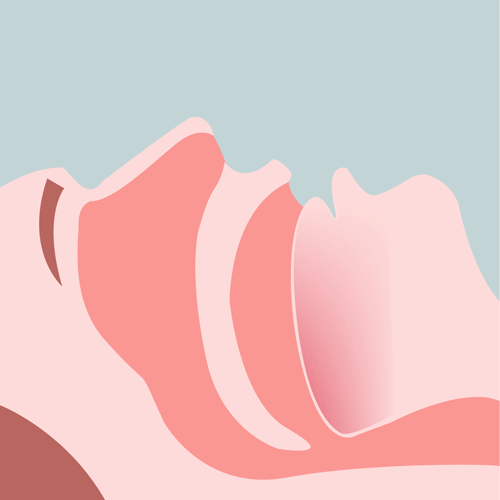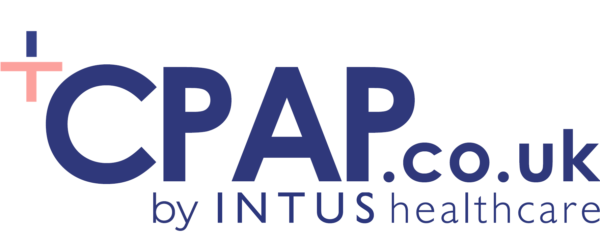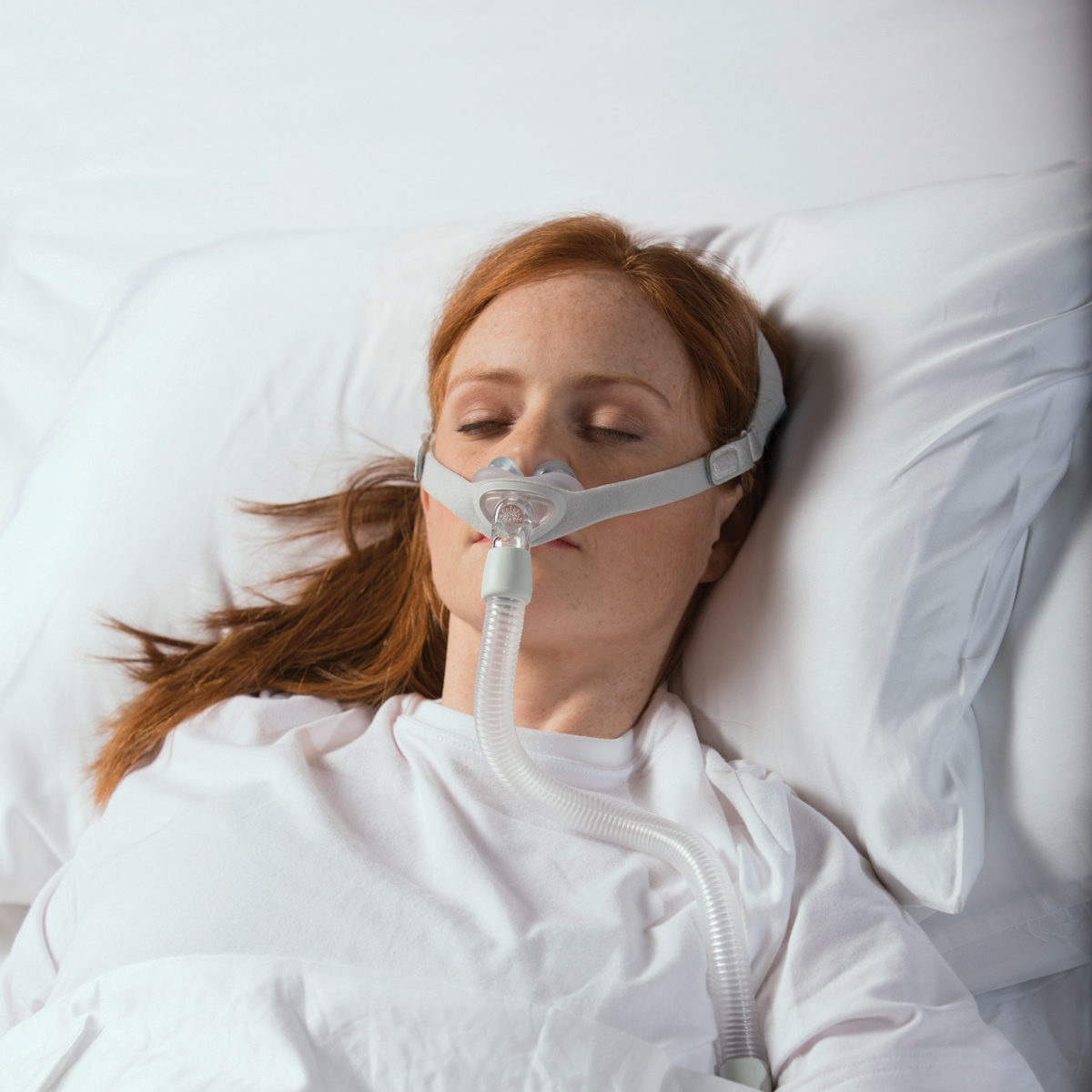Last updated on November 20th, 2024 at 10:53 am
CPAP stands for Continuous Positive Airway Pressure. The continuous airflow provided by the machine keeps your airway open and eliminates the breathing pauses caused by Sleep Apnoea.
CPAP therapy is the most common treatment option for Obstructive Sleep Apnoea (OSA).
What is a CPAP machine?
A CPAP machine motor delivers continuous pressurised air to your nose or mouth via a CPAP tube into a CPAP mask.
The continuous flow of purified, pressured air prevents your airway from collapsing at night. People commonly ask what a CPAP machine does when you stop breathing.
The pressurised air pushes against blockages; therefore, you do not stop breathing. As you no longer have an obstruction to your oxygen flow, you wake up feeling refreshed.
Obstructive Sleep Apnoea (OSA) is when apnoeas (breathing pauses) and hypopnoeas (breathing restrictions) repeatedly occur as your upper airway becomes obstructed.
OSA is due to the relaxing of muscles and the subsequent collapse of the tissue surrounding the passageway.
Generally preceded by snoring, these pauses and reductions in airflow are followed by choking a gasping sounds as the brain reacts to the oxygen drop by momentarily waking you from your sleep.

How does a CPAP machine work?
A CPAP machine consists of the following:
- The motor: This is the device itself that sits at your bedside. Delivering quiet pressurised air, taken from room temperature. The pressurised air is delivered through a CPAP hose into your airway through a CPAP mask.
- How does a humidifier improve CPAP therapy? A humidifier warms the air and adds extra comfort. You can add a CPAP humidifier to your therapy.
- CPAP hose: The CPAP hose connects the machine to your CPAP mask and is typically 6ft long. Note: If humidification is used, a heated tube can be added to your therapy to keep the air warm and improve comfort.
- CPAP mask: Depending on how you breathe and sleep will reflect on what CPAP mask type you need. A full-face CPAP mask is for those breathing through their nose and mouth at night. A nasal cushion or nasal pillow CPAP mask is for those who breathe only through their nose at night.
Additional content of interest: What is a CPAP Mask, and which is right for me?
What are the different types of CPAP machines?
There are three types of breathing machines, APAP, CPAP and BiPAP; they are all very similar.
The main difference between these devices is the CPAP pressure settings.
CPAP – Stands for Continous Positive Airway Pressure; these machines can be set to a fixed pressure mode between 4-20. A fixed pressure setting has to be determined by your doctor or sleep clinic.
Or these machines can be set to an automatic pressure that changes throughout the night – known as APAP (Automatic Positive Airway Pressure). There are a variety of CPAP machines to choose from; the ResMed AirSense 10 is a popular device, as well as the Prisma SmartPlus.
Please read our blog on choosing a CPAP machine for more information.
APAP – Stands for Automatic Positive Airway Pressure and automatically adjusts to how you breathe throughout the night. They also move between the pressure of 4-20, allowing flexibility during the night.
BiPAP – Stands for BiLevel Positive Airway Pressure, operating the pressure setting between 4 and 25. These machines have different pressure settings for inhaling and exhaling:
- When you breathe in, the BiPAP machine delivers more pressurised air, known as Inspiratory Positive Airway Pressure (IPAP).
- When you breathe out, the BiPAP machine delivers a reduced amount of pressured air, known as Expiratory Positive Airway Pressure (EPAP).
BiPAP machines are an alternative for people that can not use a CPAP or APAP machine. Your doctor will recommend a BiPAP machine if it is necessary.
What are BIPAP machines used for?
BiPAP machines are commonly used to treat:
- Chronic Obstructive Pullimary Disease (COPD)
- Congestive heart failure
- Obesity hyperventilation syndrome
- A neurological or neuromuscular disorder
- Obstructive Sleep Apnoea (OSA)
CPAP is a clinically proven solution
Once you are tested, diagnosed, and receive CPAP therapy, the quality of your sleep will improve, just like that of millions of other Sleep Apnoea patients worldwide.
Let’s look at what a CPAP machine is and how it works.
What are the pros and cons of using a CPAP machine?
Like everything, there are always two sides to the coin. It is good to remember that the benefits by far outweigh the negatives when using CPAP therapy.
CPAP therapy health benefits
Treating your Sleep Apnoea with a CPAP machine can improve your symptoms, from snoring and choking during sleep. But there are other health conditions that CPAP helps with:
- Depression and Anxiety: Studies show that using CPAP can improve your mental health.
- Type 2 Diabetes: You’re at a higher risk of developing type 2 diabetes when you have obstructive sleep apnoea. Using a CPAP machine reduces the risk.
- Heart Disease: A study found that using a CPAP machine decreases cardiovascular events in those with coronary artery disease.
- Stroke risk reduction: Studies show that using a CPAP machine is associated with a lower risk of developing a stroke.
- Atrial Fibrillation: Those with Sleep Apnoea are four times more likely to develop atrial fibrillation. Those with atrial fibrillation and Sleep Apnoea using a CPAP machine are less likely to have a reoccurrence of the heart disorder.
Additional content of interest: What is a CPAP Mask, and which is right for me?
Side effects and drawbacks of CPAP
Some problems can occur when using CPAP therapy. Let’s take a look at some common side effects.
Red marks and skin irritation from CPAP masks: Many people come across red marks from their CPAP masks. This can be due to an ill-fitting mask or a skin allergy. For helpful solutions, please read our blog on solving red marks and skin damage from your CPAP mask.
CPAP mask leaks: Air leaks from a CPAP mask can be annoying and wake you up throughout the night. Usually, your mask does not fit properly, or your sleeping position dislodges your mask. Sometimes tightening your headgear will relieve you of the issue. You could also consider a CPAP pillow to prevent moving your mask from your face.
A dry mouth or nose: When a CPAP mask does not fit correctly, you can suffer from a dry mouth due to mask leaks. You could try a more suitable mask or add humidification to your therapy to warm up the pressurised air.
Can I buy a CPAP machine?
People often ask can I buy a CPAP machine? In order to purchase a device from us, you need to have Sleep Apnoea confirmed to purchase a CPAP machine or receive one through the NHS.
CPAP documentation can be acquired by taking a private sleep test or sleep study through a sleep clinic.
Sleep Apnoea Testing
On Sale Now, Get 11% Off for a Limited Time! If you think you have OSA and have not had it confirmed, take an In-Home Sleep Test and find out within two working days.
The test is simple, affordable and takes just one night to complete.
We have excellent feedback on our sleep tests, as we support our customers throughout the entire process.

If you need any help or advice on what a CPAP machine is and how it works, contact us.


